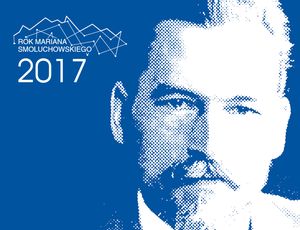
As September 2017 marks the 100th anniversary of the death of the eminent Polish physicist Marian Smoluchowski, the Polish Physical Society declared 2017 the Smoluchowski Year. As part of the celebrations, the Jagiellonian University Museum Collegium Maius and the JU Faculty of Physics, Astronomy and Applied Computer Science are holding a special exhibition devoted to one of the most famous Polish scientists.
The exhibition presents Smoluchowski’s research work, public activity, as well as private life. Despite the passage of time, Smoluchowski’s scientific achievements are still very much relevant, which is reflected in the fact that his research publications have been cited over 5 thousand times just since the start of the present century.
Marian Smoluchowski (1872-1917) was one of the most famous scientists of the late 19th and early 20th century. He graduated with distinction from the University of Vienna and later became a lecturer at the University of Lvov, where he took the position of an extraordinary professor of theoretical physics at the age of 28. At 31, he received full professorship, becoming the youngest professor in the entire Austro-Hungarian Empire. In 1912 he took the Chair in Experimental Physics at the Jagiellonian University. On 15 July 1917 he was elected JU Rector. Two months later he died after contracting dysentery while taking bath in a river. He was buried at Rakowice cemetery.
Already during his lifetime Smoluchowski earned the reputation of an eminent physicist. He explained that fluctuations in particle distribution are responsible for both the Brownian motion (i.e. irregular movement of particles in a fluid) and the blue colour of the sky (as the fluctuations cause blue light to scatter). He contributed to the establishment of statistical physics and published important works on diffusion and colloids. One of equations in the diffusion theory is known as the Smoluchowski equation.
If not for his premature death, Smoluchowski could have become co-winner of three Nobel Prizes. Two such prizes were awarded in 1925 and 1926 to R.A. Zsigmondy and T. Svedberg, whereas J.B. Perrin received Nobel Prize for his research into discontinuous structure of matter. Smoluchowski’s theoretical papers were especially important for Zsigmondy, who at his request developed mathematical theory of coagulation.
Smoluchowski was also a pioneer of Polish skiing and alpinism. He climbed previously unconquered peaks and established new tourist routes. In 1911 and 1912 he was the head of the Tourism unit of the Tatra Mountaineering Society.
More information about the Smoluchowski year is available at smoluchowski.uj.edu.pl

